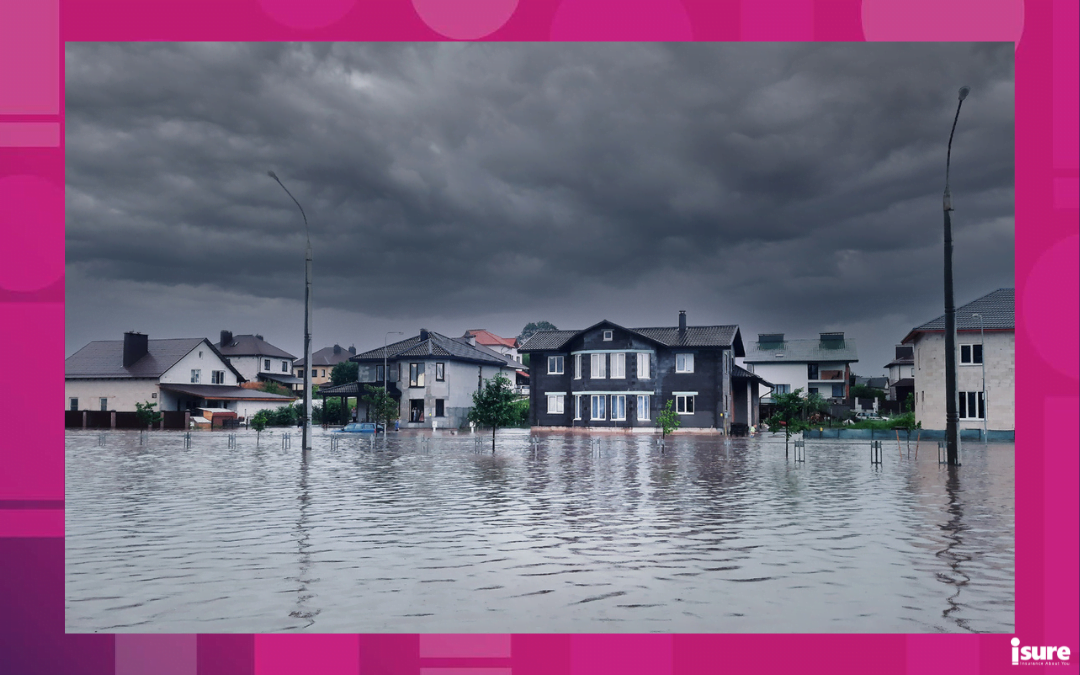Living in one of the province’s largest cities comes with its road bumps. From high rent to crazy traffic, you never know what to expect. However, one aspect of living in Toronto that many disregard is how prone it is to flooding. If you’ve lived in the city your whole life, you know just how dangerous copious amounts of rain can be. From the infamous flood of 2013 to the massive flood that shook the city in 2018, Toronto has had its fair share of heavy rainfall disasters. But is your area flood-prone? Did you know that Toronto has a secret flood map? Let’s take a deeper look below.
Is Toronto flood-prone?
During the 2018 flood, the City of Toronto received over 120mm of rain, with the monthly average in the city being only 74.4mm. The impacts were substantial, with flight cancellations, subway and bus closures, to over 300,000 people affected by power outages. According to the Insurance Bureau of Canada, the damages to insured properties exceeded $850 million. This sparked a debate as to just how flood-prone the city of Toronto is and what will be done to make it more sustainable in the event of torrential downpours. So, you may be wondering how you can prepare yourself, or where in Toronto is the most prone to flooding. Luckily, isure has everything you need to know about flooding in Toronto.
What areas are most prone to flooding in Toronto?
When it comes to preparation for heavy rainfall, it is first crucial to decipher whether or not your area is prone to flooding. Due to the way the city is laid out, many areas take a bigger hit when it comes to extensive damage where flooding in Toronto occurs. Your best method of figuring out just how susceptible you are to flood damage is by checking out one of the many flood maps in Toronto. This one from the TRCA does a great job of mapping out the areas of the city where flooding is more common. If you find yourself living in one of these areas, taking the necessary precautions to prevent flood damage is a crucial first step.
Toronto’s Secret Flood Map
The Toronto Star has released a flood map indicating the areas of Toronto that are most hazardous to flooding. Its creation is thanks to Jason Thistlethwaite and Daniel Henstra with JBA Risk Management, a company making flood maps for the Canadian government. With this map, Thistlethwaite and Henstra show the enormous amount of flood risk that remains hidden from the public. Modeling something as complex as Toronto is a difficult task, so the map may have some uncertainties.
Furthermore, the map shows areas that will likely flood if rivers and other water bodies overflow in a brutal storm. Known as fluvial flooding, this is shown in blue on the map. However, what these maps ignore is pluvial flooding. This happens when rainfall is so great that it overwhelms sewers and drainage infrastructure. Marked in orange, this is also known as surface flooding. “This is Canada’s most significant climate change risk. It’s getting worse, and we need as much information out there as we can get,” Henstra states to the Toronto Star.
How to prevent house flooding in Toronto
Luckily, there are steps you can take to prevent damage to your home in the event of a flood. It is important to keep in mind that these steps are to be taken even if you aren’t in a flood-prone area of the city! Though it may cost a bit to make these adjustments, it is worth it as opposed to having to deal with the consequences of a flooded home. For more tips, check out our article on 13 tips to prevent basement flooding.
Flood prevention tips:
- Seal cracks in your foundation walls and basement floors. This is an easy way to reduce the risk of basement flood damage, which is the most susceptible area. Generally, this task is quite simple and only involves sealing the inside of your basement’s flooring. In more drastic cases, you may have to dig around the foundation.
- Install window wells. Window wells are shields made of galvanized steel that help support the earth around your basement windows. They also block debris and moisture from reaching your basement windows. These do an excellent job of improving the drainage around the windows. If you would like to go the extra mile, you can also add well covers for that extra bit of protection.
- Get a backup source for your sump pump. In the event of a major downfall where electricity is cut, your sump pump won’t work. By having your sump pump connected to a reliable backup source, such as a battery or generator, you can make sure it works in the instances you need it most.
- Avoid pouring fats, oils, and grease down your drain. This simple trick will do wonders in making sure your drains stay clear, avoiding backup. Over time, these materials will build up and create blockages that may lead to some bad sewer backup.
What do I do if my home floods?
If your worst nightmare has come true and your home is flooded, it’s important to take the necessary steps to make sure you and your family members are safe. First and foremost, you want to make sure you do not turn on any electronic devices where flooding has occurred. Stay away from any outlets until an electrician has been able to survey the situation. If you have gas services in your home, check for any odd odors. If you smell ‘rotten eggs,’ contact a gas company immediately. Read all of the ways to protect your home from water damage here, and how your home insurance can help protect you.
Luckily, insurance covers most damage done to your belongings and your home. However, if you are in Toronto, it is important to first call 311 to have the city come and investigate the extent of the damages. This will help prove whether or not the damages you suffered from a flood were due to your house’s structure or negligence. From there, you should then contact your isure broker or insurer to submit a claim.
Remember, no matter the extent of flooding in Toronto, having the proper Toronto home insurance protection is crucial for moments like these. Contact us or request a quote today!





